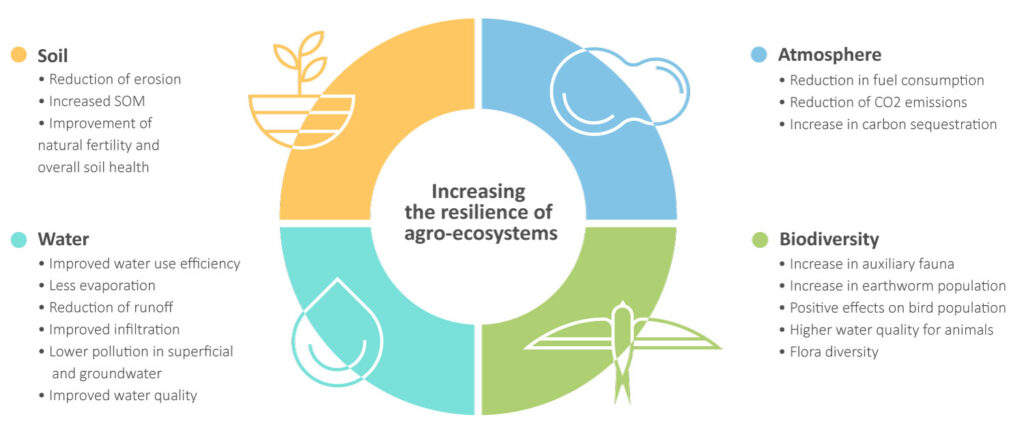
Improvement of soil properties:
Soils improve considerably when CA techniques are put into practice because, not disturbing soils, favour the proliferation of organisms and microorganisms that:
- promotes infiltration due to the galleries formed when they move within the soil (worms) and,
- by their decomposition, increases the level of soil organic matter, which is directly involved in the formation of stable aggregates, causing a better structuring of soils.
Increase of biodiversity:
Obviously, life of any organism that lives in the soil is affected by the performance of mechanical operations on it. The diminution or elimination of tillage will produce, therefore, growth in populations of soil organisms and microorganisms both in number of species and individuals of each species.
Less erosion:
Keeping soils covered and protected diminish erosion because:
- Soil cover avoid direct impact of raindrops on the ground and its breaking up as a result thereof.
- Vegetation acts as a physical barrier and slows water movement downslope.
- Infiltration rate increases when soil has a good structure, this implies a reduction in the surface runoff.
Less CO2 emissions:
Not tilling (or doing it to a lesser extent) avoid the reaction between soil C and atmospheric O2, resulting in CO2 emissions. Furthermore, using less fossil fuel also implies a decrease in the emission of greenhouse gases.
Increase of the CO2 sink effect of the soil:
Plants act as carbon sinks. The implementation of conservationist techniques, leaving crop residues in the soil, makes that CO2 fixed in plants structures does not go back into the atmosphere, becoming part of soil and increasing soil organic matter values.
Less contamination of downstream water:
The lower soil erosion and reduced runoff minimize the amount of water, soil and chemicals attached to soil or diluted in water reaching streams that are downstream of farms.
Less floods ans landslides:
Conservation Agriculture makes more unlikely the occurrence of floods and/or landslides because, soil particles are more united and, consequently, are running less the risk to be eroded. On the other hand, roots of plants hold soil. Finally, as stated before, surface runoff diminishes.
